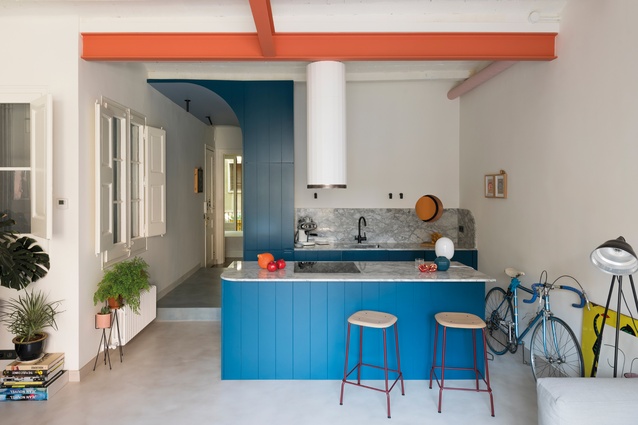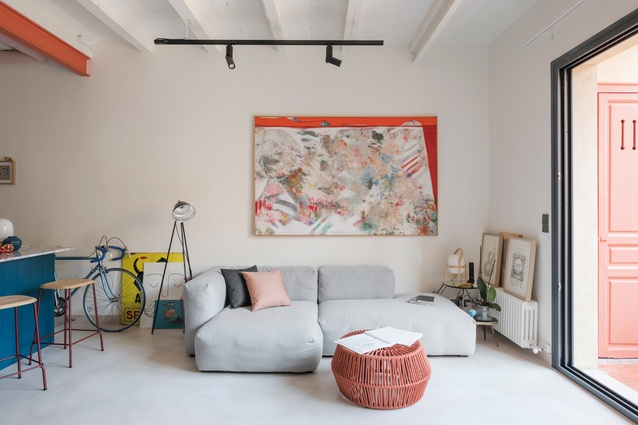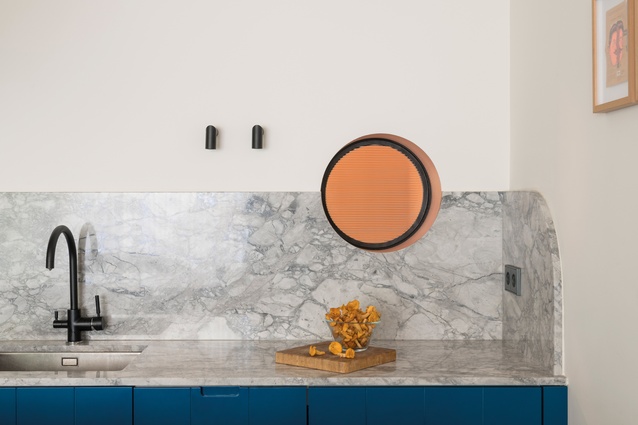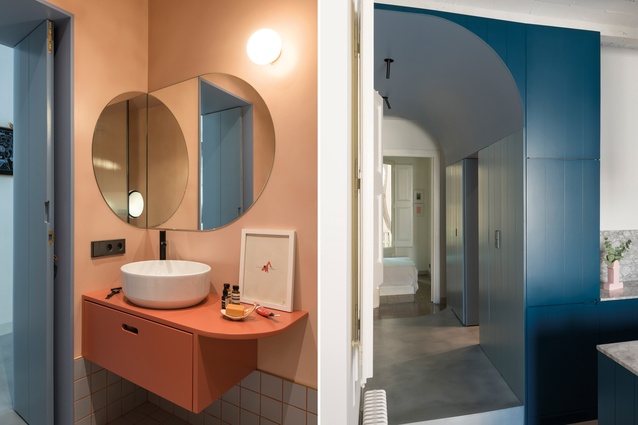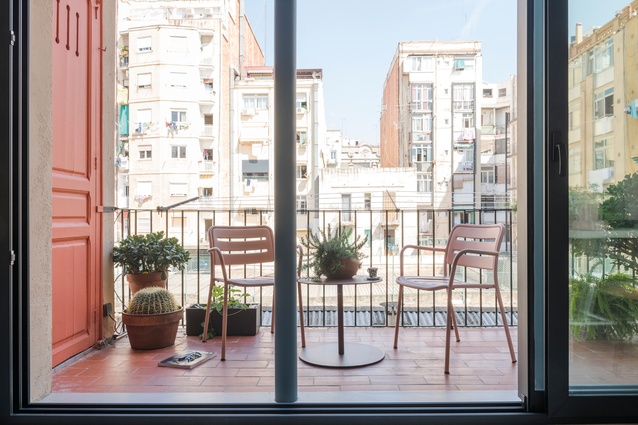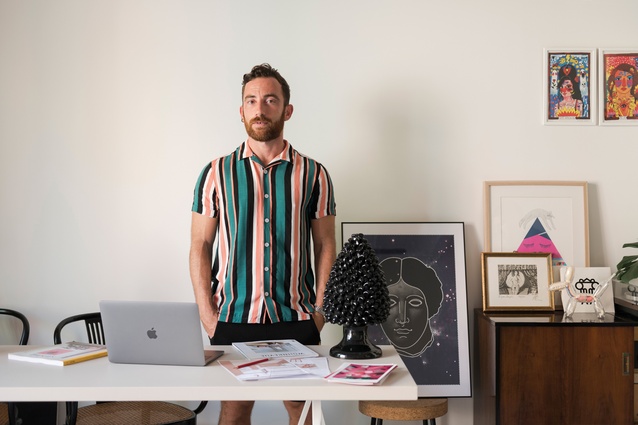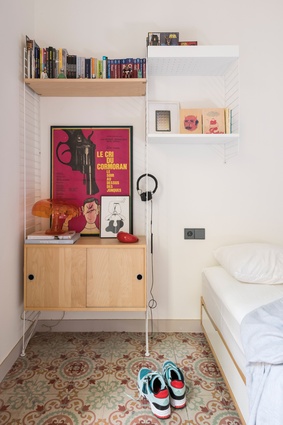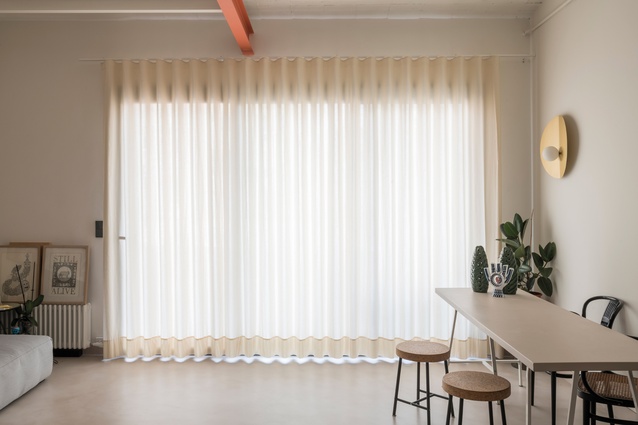Small spaces: Barcelona nouveau
This tiny Spanish apartment oozes colour, graphic flair and personality while residing a stone’s throw away from the Sagrada Familia.
Each day in Barcelona’s Eixample district, the tourist throng goes to gaze at Antoni Gaudí’s famously ambitious church, Sagrada Familia. They know that there’s enough genius in this masterpiece in which to bathe themselves. Italian architect Andrea Serboli, like all denizens of the area, is also privy to this knowledge. Walk just metres down a quiet passageway beside the church and you’ll find his apartment, magnetic and resplendent, perched on an upper floor.
Last year, the private space was purchased by Serboli and underwent a complete refurbishment with the help of his friend and colleague Matteo Colombo.
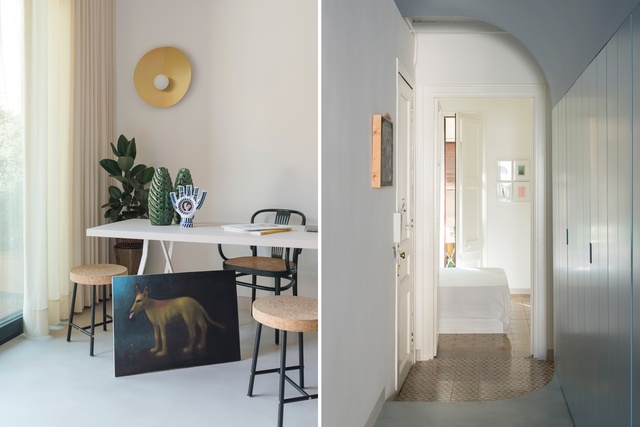
Though many of the original fittings were irreversibly damaged after severe neglect, the architects, who co-founded Colombo and Serboli Architecture (CaSA), saw the opportunity to turn the flat into a wunderkammer: a cabinet of curiosities – according to the German expression – where objects from the owner’s growing eclectic collection of things could sit side by side.
It’s a style that mushroomed in mid-16th-century Europe during the so-called Age of Exploration and one that neatly reflects the region’s long history of appreciation for the ornamental. The building, a product of Catalan Art Nouveau, which swept through Spain at the turn of the 20th century, is also decorative; like other residential blocks nearby, iron balconies, all sinuous lines and coiling shapes, protrude from its façade in modernist fashion.
Serboli wanted a two-bedroomed unit – a difficult brief, in this case, for a set of period partitions divided the 75m2 space into six rooms. But he and Colombo didn’t see it that way. Rather, it was a canvas they thought could also showcase their firm’s distinct style. “[It] gave us the chance to field a proposal that reflects our goal to generate a new, affordable luxury: not ostentatious but to be searched for in everyday details,” the firm says. Coral-painted beams now trace along those old divides, which were pulled out to make way for the addition of an unusually large, blue box.

Designed in collaboration with firm Margherita Serboli Arquitectura, the wooden-clad volume was built into the centre of the floor plan to create what the architects call the apartment’s inner sanctum – the bathroom – whose entryway, camouflaged by a set of seemingly innocuous closets, is withheld from unknowing visitors like an intimate secret.
For those who do know where to look – a circular glass window above the kitchen counter is the only tell – the inside is far softer. Salmon-coloured micro-cement covers each wall, while a fluted glass sheet, framed in black, acts as a screen for the combined shower and bath-tub.
A congruence between forms is palpable here. Old and new, bold and neutral, casual and context-driven materials combine to breathe interest into the ordinary. Regular glimpses can be caught of the flat’s original geometric tiles, returned to their former splendour.

Walk into the living room and vintage wicker chairs bearing an almost uncanny resemblance to Thonet’s Bentwood classic sit around a table with Ikea trestles. Go further still, and a semi-arched ceiling in the corridor gives the impression of walking through a slowly closing wave tunnel while, at the same time, serving as a striking contrast to the rest of the apartment’s more traditional vaults.
“This relationship between usability and curiosity perhaps represents the most intriguing, dynamic part of the apartment,” the architects explain.
All of this has been executed with a self-assuredness that speaks to Serboli and Colombo’s combined ability to alchemise the creative spirit of the existing space and marry it with their own house style. Perhaps this best explains the origins of the apartment’s pull; it, too, has an air of confidence hewn from raring aspirations.
This article first appeared in Urbis magazine.


